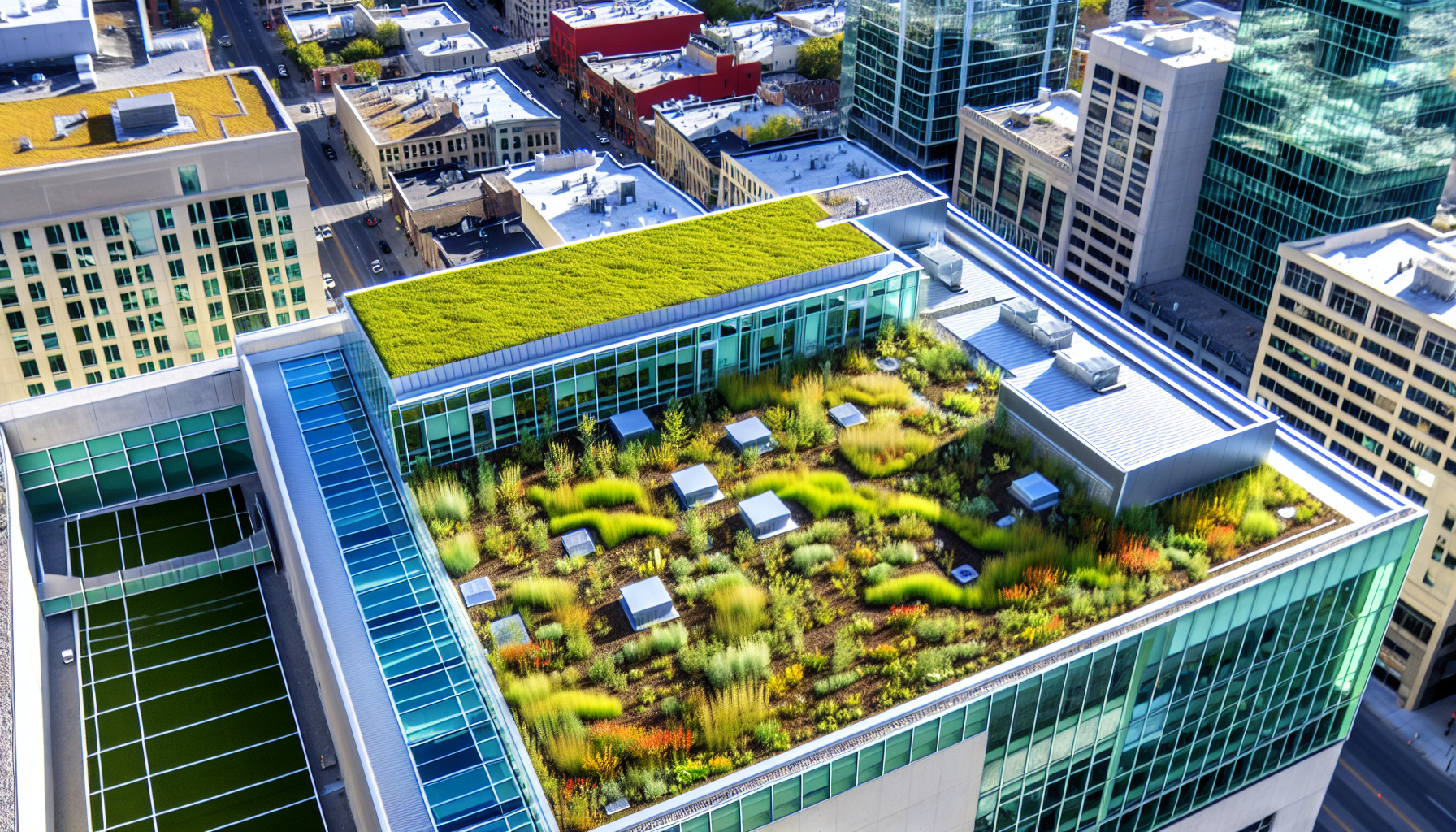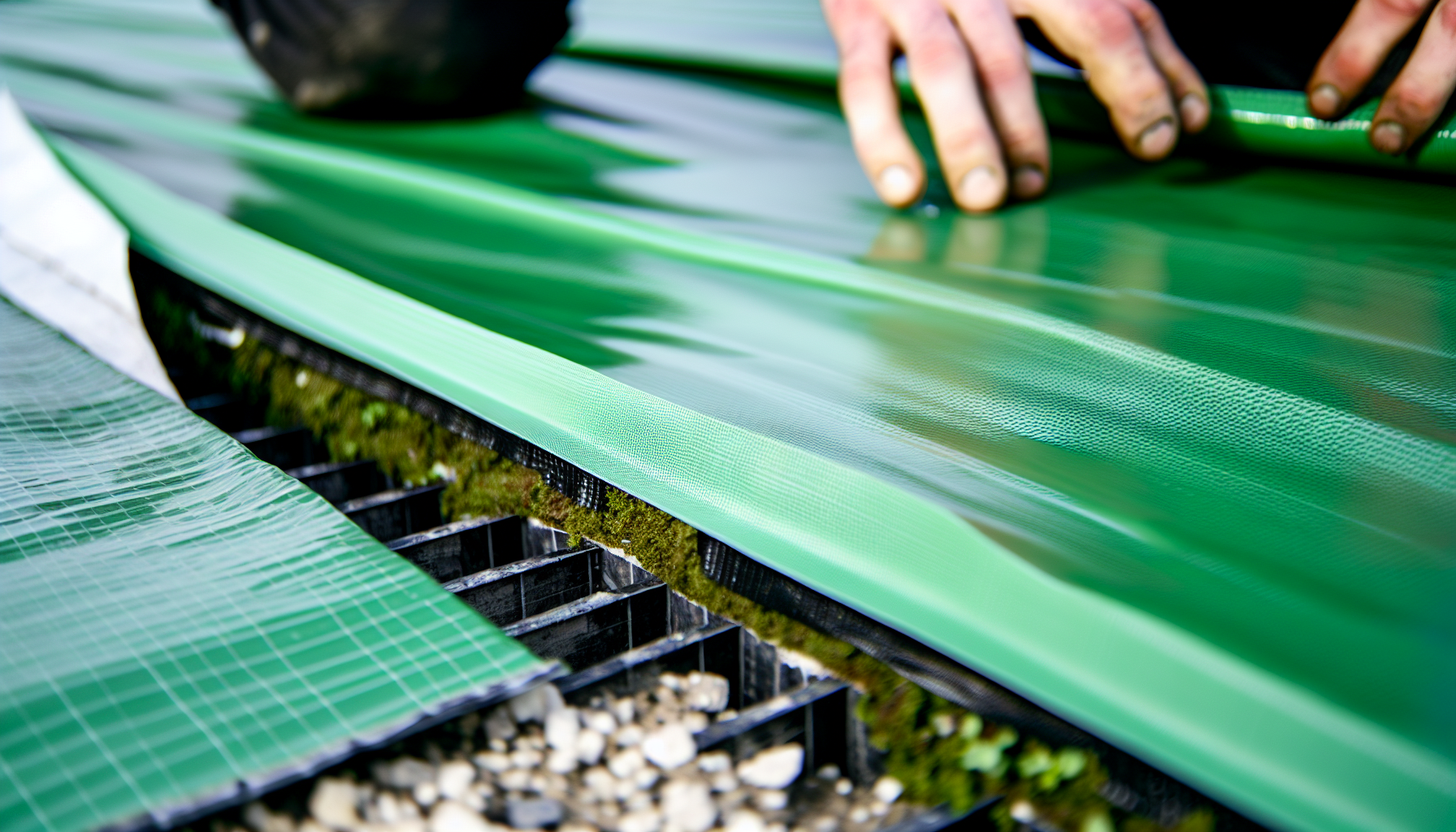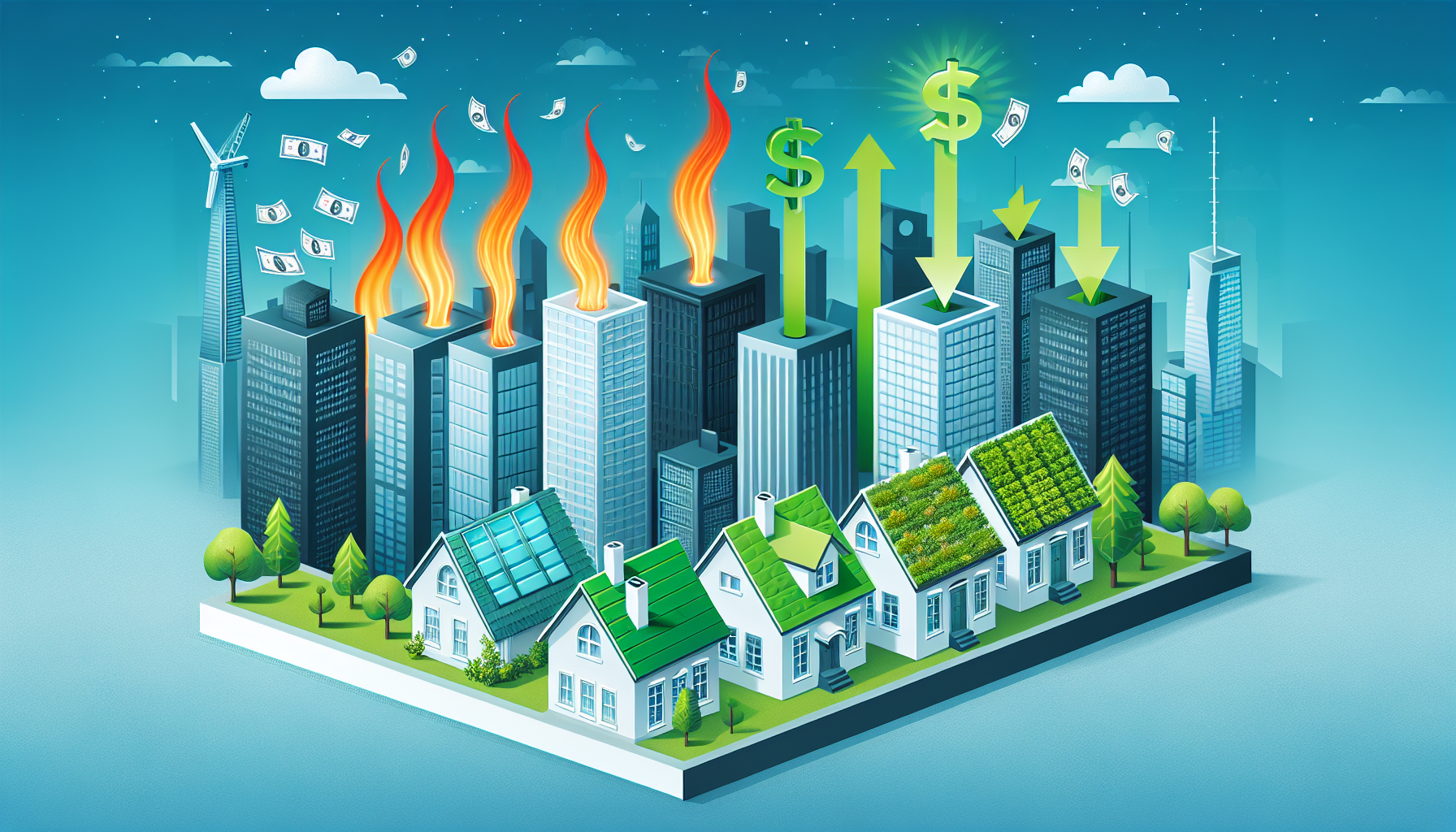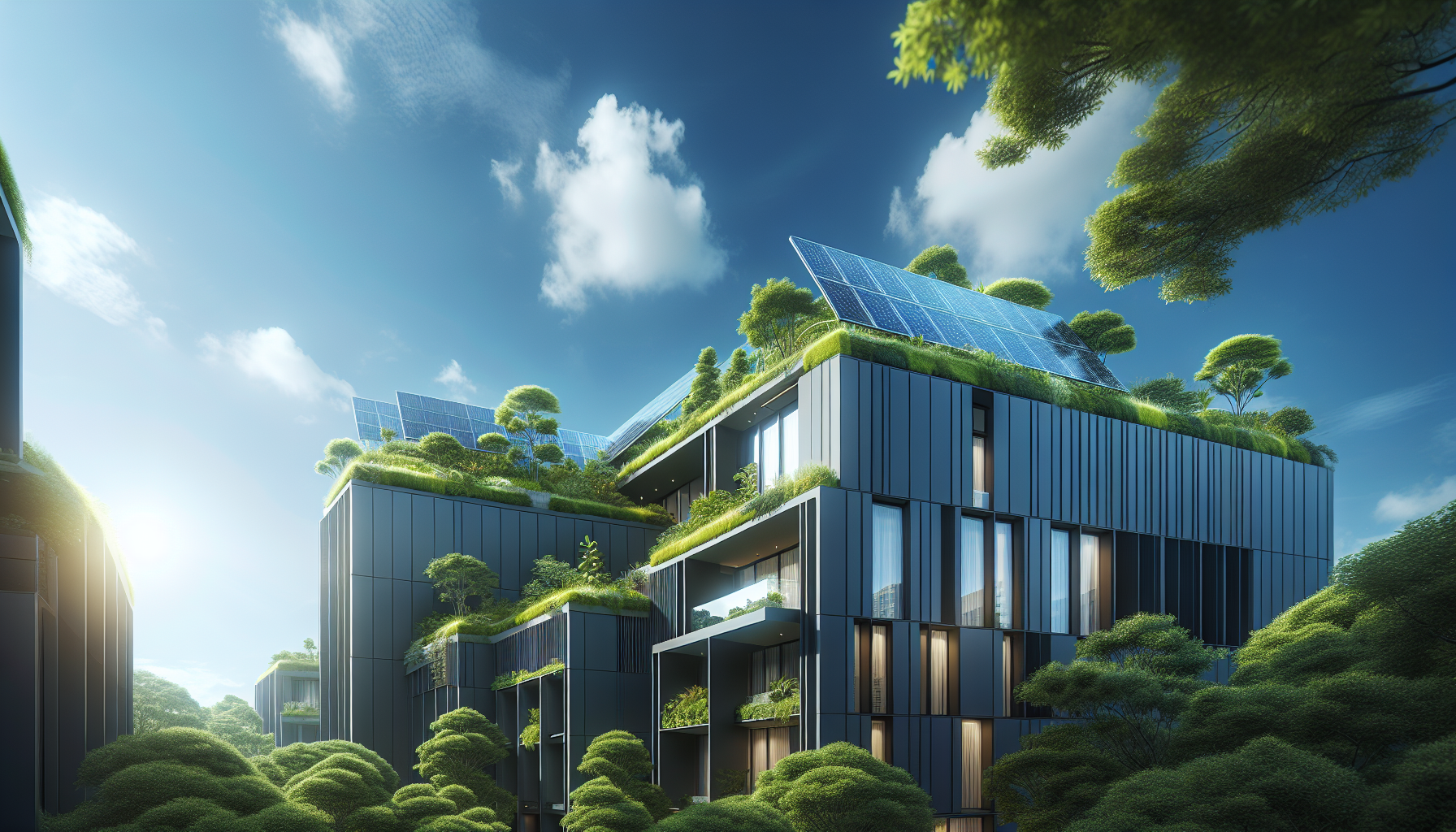Maximizing Eco-Friendly Living: Green Roofing Benefits and Installation Tips
Are you considering a green roof for its environmental and financial gains? In this guide, we’ll explore the vital “green roofing benefits and installation tips.” From reducing heat in urban areas and managing rainfall to cutting energy costs, green roofs make a significant impact. Our installation section will equip you with practical know-how, from ensuring structural safety to selecting plants and materials tailored to your roof’s ecosystem.
Key Takeaways
-
Green roofs combat urban heat island effect, improve air quality, and manage stormwater runoff, providing numerous environmental benefits to urban areas.
-
The process of installing a green roof involves careful consideration of structural support, waterproofing, and drainage, as well as selecting appropriate vegetation that matches the local climate and building requirements.
-
Green roofs offer financial and energy efficiency gains by extending roof lifespan, increasing property values, and reducing heating and cooling costs, establishing them as a profitable and sustainable building feature.
Exploring the Advantages of Green Roofs

Not only do green roofs add aesthetic appeal, but they also provide benefits that are transformative for urban environments. From mitigating urban heat islands and enhancing air quality, to managing stormwater runoff, green roofs are a solution to many urban environmental challenges.
Mitigating Urban Heat Islands
Urban areas are often hotter than their rural counterparts—a phenomenon known as the urban heat island effect. Green roofs can play a pivotal role in reducing this effect. The vegetation layer on green roofs absorbs sunlight, providing shade and reducing the heat absorbed by the building. This, in turn, reduces the amount of heat re-emitted into the environment, helping to cool the surrounding areas.
Studies suggest that extensive green roofing has the potential to significantly lower urban temperatures, thus alleviating the urban heat island effect. Furthermore, green roofs can be combined with other heat reduction strategies such as installing insulation, planting more trees, and increasing the reflectivity of buildings to further diminish the urban heat island effect.
Enhancing Air Quality and Biodiversity
In addition to their cooling effect on urban environments, green roofs contribute positively to air quality. They:
-
Filter pollutants and greenhouse gas emissions, contributing to a healthier urban atmosphere
-
Provide habitats for various species, promoting biodiversity in urban areas
-
Support a diverse range of life, from beetles and spiders to bees, rare orchids, and hoverflies
The plant variety selected for a green roof has a significant impact on enhancing biodiversity. Native vegetation such as herbaceous plants, shrubs, and trees are particularly suitable. By incorporating green roofs into urban areas, we not only improve air quality but also foster a rich and diverse ecosystem.
Stormwater Management
Another significant advantage of green roofs lies in their ability to manage stormwater. By absorbing rainwater, green roofs reduce the volume of water that flows off the roof surface, thereby reducing the strain on sewer systems and preventing flooding.
Green roofs can retain a significant amount of stormwater. In fact, a typical green roof can absorb anywhere from 35.5% to 100% of stormwater runoff. By incorporating green roofs into urban design, we can help manage stormwater effectively, reducing the risk of overflow and flooding in our cities.
The Ins and Outs of Green Roof Installation

Having examined the benefits of green roofs, it’s time to understand the installation process. This involves choosing the right structure, ensuring effective waterproofing and drainage, and selecting suitable plants and soil.
Choosing the Right Structure
A green roof’s architecture must be capable of bearing the weight of the vegetation, growth medium, and additional burdens like water and snow. The main factors to consider include the type of green roof—whether it is extensive or intensive—and the weight of the soil and plants to ensure that the building can support the additional loads.
The structure needs to support a weight range of 60-200kg/sqm for extensive green roofs. In the case of intensive green roofs, the soaked system can add about 30 pounds per sq. ft., and deeper roof gardens can weigh up to 100 pounds per square foot. This might necessitate the involvement of a structural engineer to evaluate and adjust the building’s capacity.
Waterproofing and Drainage Solutions
Waterproofing is a paramount aspect of green roof installation. This ensures that the roof is protected from potential water damage, which can be detrimental to the structure of the building. Essential elements include:
-
Use of waterproofing membranes
-
Membranes that offer root resistance
-
Membranes that endure UV rays
-
Membranes that maintain consistent thickness
In addition to waterproofing, an effective drainage system is also essential for a green roof. This includes:
-
A drainage layer
-
A filter layer
-
A growing medium layer
-
A vegetation layer
Regular inspection of these systems is crucial to ensure the longevity of the green roof.
Selecting Plants and Soil
Choosing the right plants and soil is vital for the success of a green roof. They need to be compatible with the climate, require minimal maintenance, and be able to effectively manage irrigation, soil erosion, and water reservoirs.
Sedum, stonecrop, and succulents such as sempervivums are particularly suitable for green roofs due to their resilient characteristics and minimal upkeep needs. The soil or growing medium should have suitable composition, structure, packing density, thickness, and water retention capacity to effectively support the vegetation and withstand various weather conditions.
Financial and Energy Efficiency Gains

While the environmental benefits of green roofs are apparent, they also offer compelling financial and energy efficiency gains. From reducing heating and cooling bills to increasing property values, green roofs present a viable economic investment.
Reducing Heating and Cooling Bills
Through insulation and shading, green roofs have the potential to substantially cut energy usage, resulting in lower heating and cooling expenses. The vegetation layer on green roofs absorbs sunlight, providing shade and reducing the heat absorbed by the building. This, in turn, reduces the amount of heat re-emitted into the environment, helping to cool the surrounding areas. Additionally, proper ceiling insulation, such as foam insulation, reflective insulation, structural insulated panels, and other insulation materials, can further enhance these energy-saving benefits. To maximize these benefits, it’s essential to install insulation correctly.
Research indicates that a green roof can decrease heating expenses by an average of 23% and reduce cooling expenses by around 75%. This leads to significant savings for property owners and contributes to the overall energy efficiency of the building.
Longevity and Property Value
By acting as a protective barrier against environmental damage to the waterproof membrane, green roofs can double the lifespan of a conventional roof. This effectively doubles their life expectancy, as shown by the experience with green roofs in Germany.
Furthermore, green roofs can increase property values by approximately 11%. This is primarily due to the environmental and aesthetic benefits they offer, making them a worthwhile investment for property owners.
Integrating Green Roofs with Modern Building Practices

Green roofs are not merely standalone features but can be smoothly integrated into modern green roof construction practices like solar technology, green roof mitigation technologies, and retrofitting of existing structures, including the implementation of an extensive green roof or an intensive green roof. This allows for a more comprehensive approach to modern green roofs and sustainable building design.
Compatibility with Solar Technology
Solar technology is one method by which green roofs can be integrated into contemporary building practices. By accommodating solar panels, green roofs can maximize the eco-friendly potential of a building.
The optimization of the layout of solar panels on a green roof entails aligning the panels to capture the maximum sunlight during peak hours, usually around noon in the summer months, in order to achieve maximum energy production. This combination of biosolar technology maximizes sustainability by enabling the building to utilize solar energy while retaining the environmental advantages of green roofing.
Retrofitting Existing Structures
Retrofitting existing structures is another method of incorporating green roofs into modern construction practices. By adding a green roof to an existing building, property owners can improve the building’s energy efficiency and environmental impact.
Retrofitting existing structures for green roofs offers several benefits:
-
It is typically more cost-effective than installing on new buildings.
-
The retrofitting of existing buildings can often be accomplished at a lower cost.
-
This process can lead to substantial energy savings, especially when combined with loose fill insulation.
-
It can enhance indoor temperature regulation.
Maintenance Tips for Sustained Performance
Just like any other building feature, green roofs need appropriate care and maintenance for maintaining their performance over time. Regular inspection and care, along with addressing common issues, are integral to the long-term success of a green roof.
Routine Inspection and Care
Regular inspection plays a vital role in the upkeep of a green roof. A green roof should be inspected at least twice a year to ensure its continued good condition. During these inspections, critical components such as the perimeter, drainage, and the health of the vegetation should be assessed.
In addition to inspections, regular maintenance activities such as weeding, pruning, and fertilizing are necessary to ensure the health and longevity of the green roof.
Addressing Common Issues
Green roofs can encounter problems common to any green space, such as plant health and water retention. Regular care and maintenance can help address these issues before they escalate.
To preserve the health of plants on a green roof, it is essential to:
-
Conduct regular weeding to eliminate airborne seeds
-
Apply fertilization multiple times a year
-
Resolve water retention issues by using technologies designed to detain water and regulate runoff
-
Implement appropriate retention practices to facilitate water storage on the roof and prevent excessive drainage.
Enhancing Aesthetics and Community Spaces

Apart from their environmental, economic, and practical advantages, green roofs also enhance building aesthetics and contribute to creating welcoming community spaces. They offer a unique opportunity to integrate green space into densely built urban areas, providing a place for recreation and relaxation.
Creating Recreational Areas
Designed to serve as recreational spaces, green roofs can offer a distinct and appealing amenity for residents or employees. Some possible features for green roofs, also known as roof garden, include:
-
Walking paths
-
Seating areas
-
Sports courts
-
Urban farms
The possibilities are endless.
In planning these recreational areas, safety measures such as installing guardrails, walkways, and ladders must be taken into account. The recreational space that can be established on a green roof is influenced by the load capacity of the building, determined by the type and thickness of the green roof system, as well as the materials and design of the roof deck, beams, and other structural elements.
Psychological Benefits
Beyond their physical advantages, green roofs also provide psychological benefits. The presence of greenery has been shown to reduce stress and improve well-being, making green roofs a valuable addition to urban environments.
Research has shown that observing green roofs can enhance attention, increase productivity, and improve mental health. Moreover, green roofs can enhance the sense of community in urban areas by serving as community hubs that foster social cohesion and improve public safety.
Summary
Green roofs offer a myriad of benefits, from environmental to economic to aesthetic. They can reduce urban heat islands, enhance air quality, manage stormwater, and provide recreational spaces. Moreover, they can reduce energy consumption, extend the lifespan of conventional roofs, and increase property values.
Integrating green roofs with solar technology and retrofitting existing structures can enhance their benefits even further. With proper installation and maintenance, green roofs can provide long-term sustainability and performance. Whether you’re a property owner, a city planner, or simply someone interested in sustainable urban solutions, green roofs offer a viable solution to many urban environmental challenges.
Frequently Asked Questions
What are the 4 main benefits of a green roof?
Green roofs provide benefits such as improved air quality, reduced urban heat island effect, stormwater management, and extended roof lifespan. These benefits make green roofs a sustainable and eco-friendly choice for buildings.
What is important to consider when implementing a green roof?
When implementing a green roof, it is crucial to consider long-term growth and maintenance requirements, including watering needs and irrigation systems to support vegetation and prevent soil erosion. Proper planning for water availability is essential for sustaining the plants during low water periods.
Where is the best place to put a green roof?
The best place to put a green roof is on any horizontal space with a slope of less than ten degrees. Seek professional advice before installing on steeper spaces.
What is the most effective insulation for a house?
The most effective insulation for a house is to use both ceiling batts or rolls in conjunction with reflective roof insulation. However, it's essential to seek expert advice, especially for DIY installations.
What types of plants are suitable for green roofs?
Plants like sedum, stonecrop, and succulents such as sempervivums are suitable for green roofs because of their resilient nature and low maintenance requirements. These plants can thrive in the conditions of a green roof.








